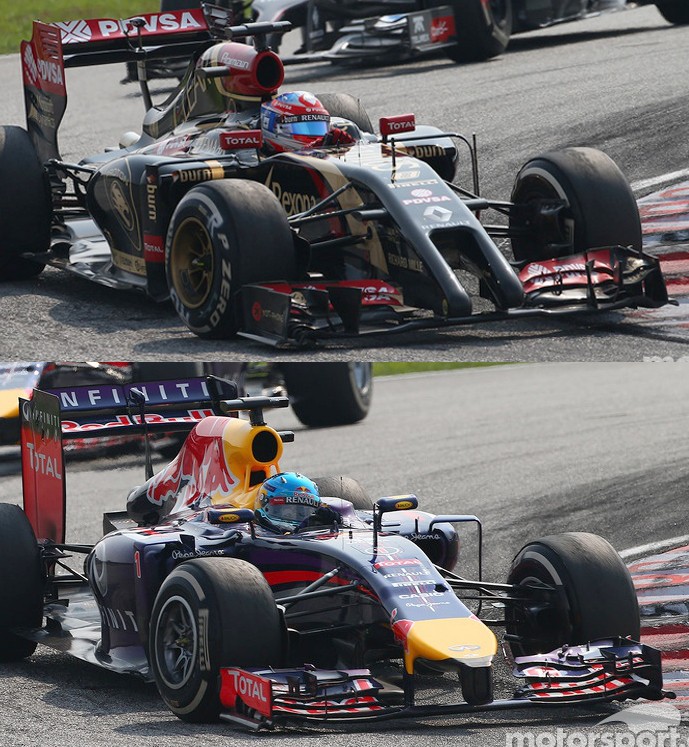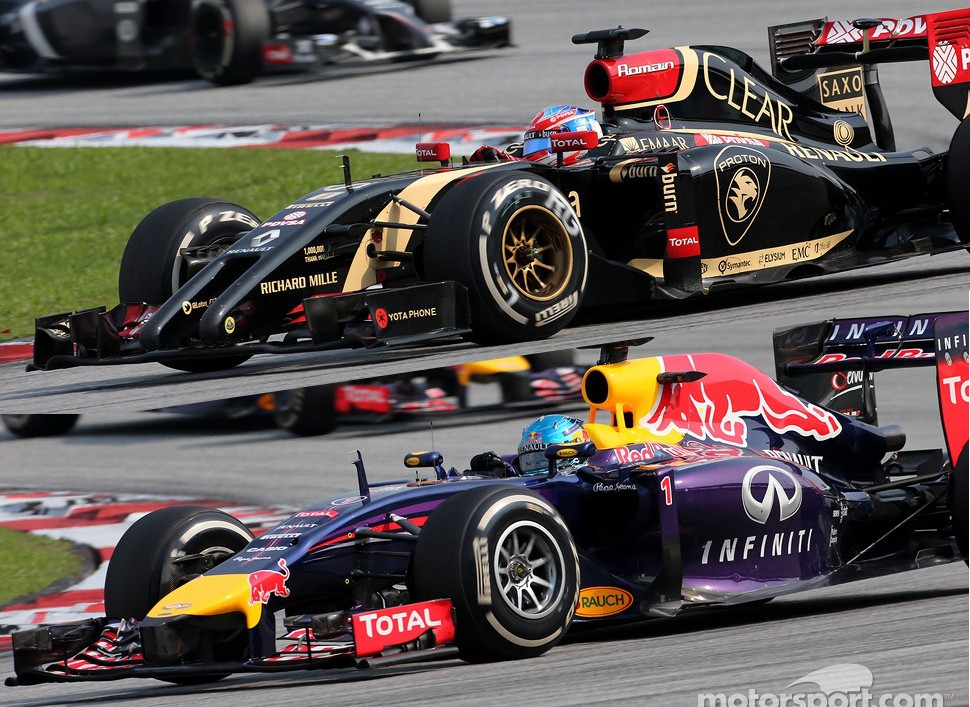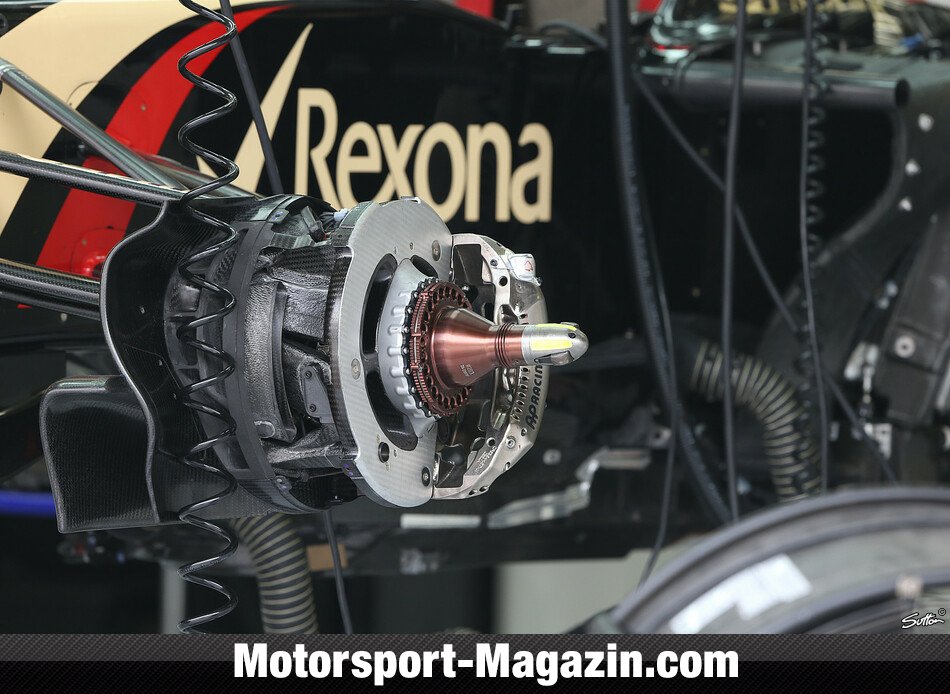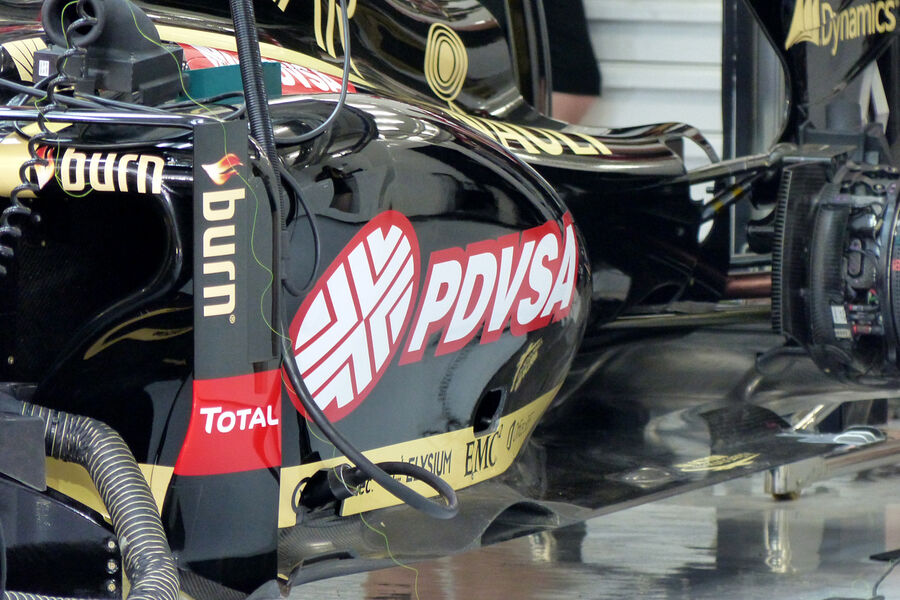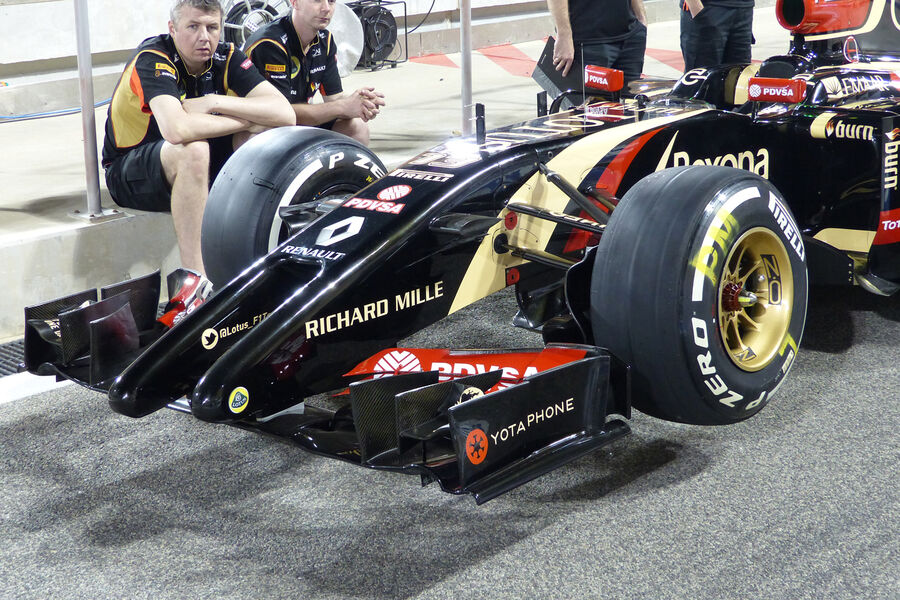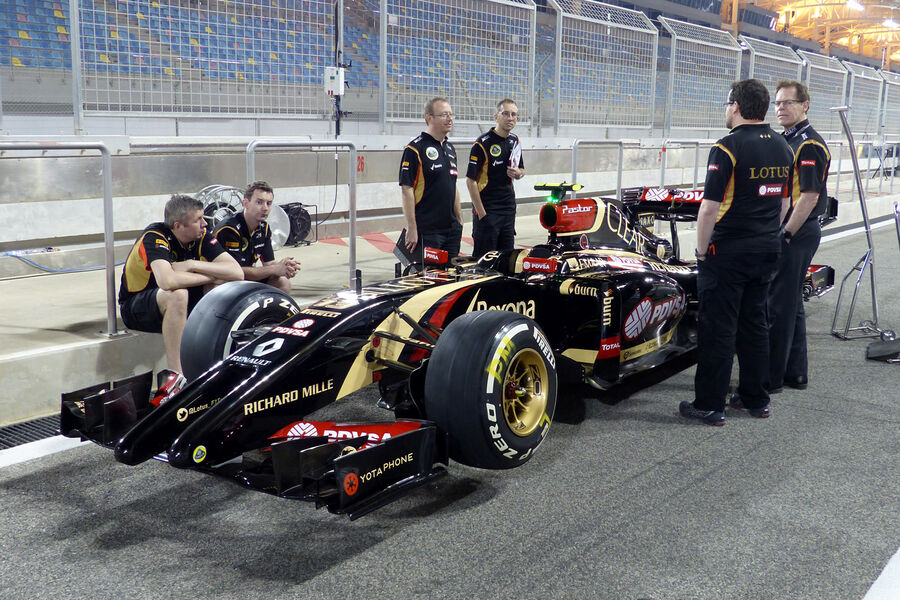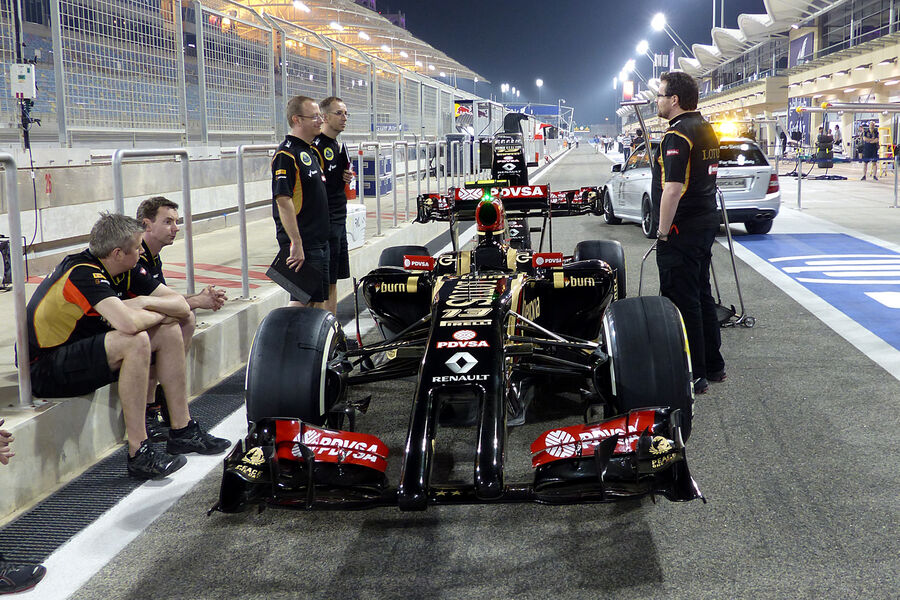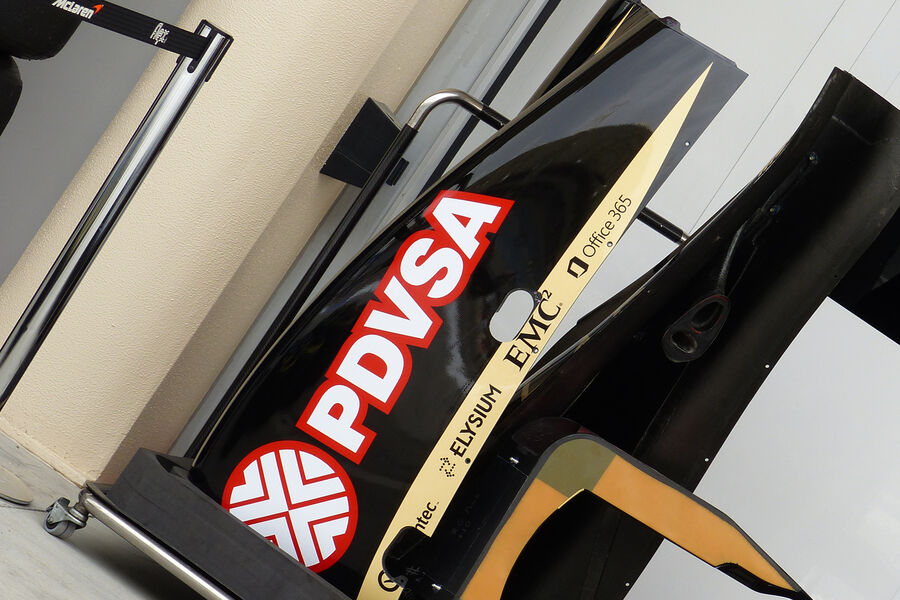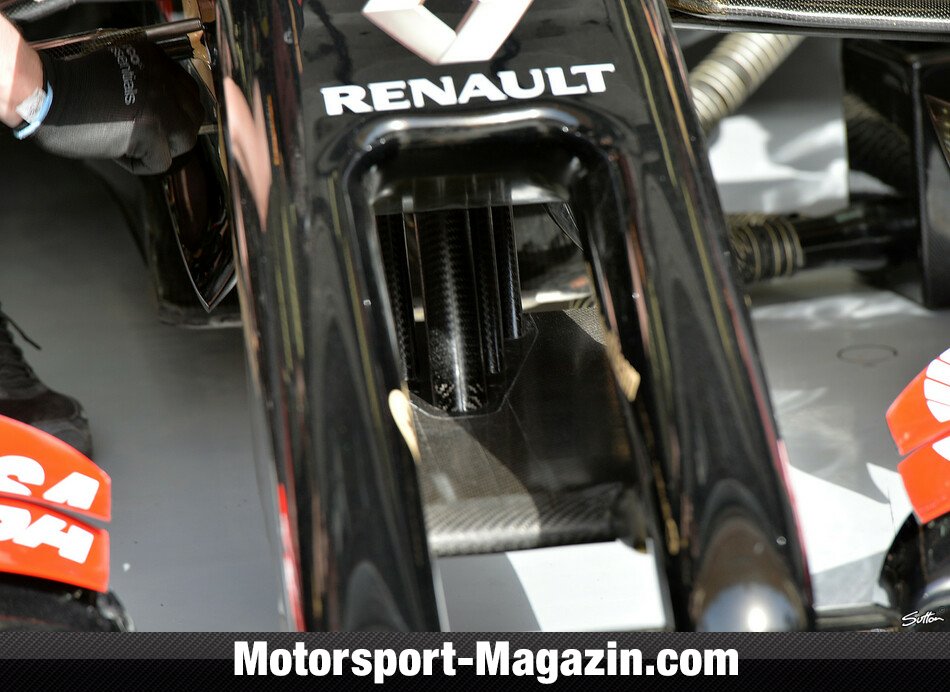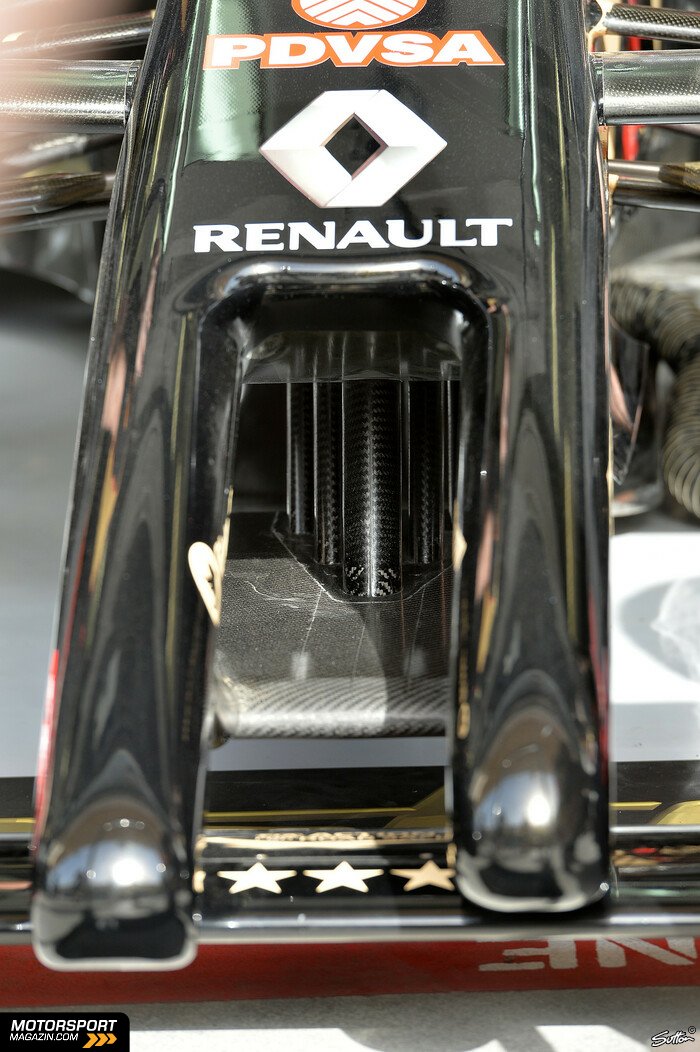I think they're two different philosophies, really.
The flap on the Lotus wing is smaller than what's allowed (light yellow, below), or maybe just positioned lower than normal, to reduce the wing's frontal area, which reduces drag at the expense of reduced downforce. It's also possible the team just ripped off a gurney flap at some point during the race; the net-result is the same.
The leading edge of the main plane is flipped up (light gray) perhaps to slow down air flow over the wing (see: inset velocity gradient), which would increase static pressure directly behind it, since static pressure is highest where speed is lowest. That could make up for some of the loss of downforce caused by a reduction in wing area.
Basically, I think it's an attempt focused on improving L/D.

The lack of end plate slots on the Red Bull increases the dynamic pressure of the flow over the wing. That makes more downforce, but also increases drag, because "excess" pressure is normally bled off through those slots. I think the larger slot-gap might be one way to address that, as it would allow the wing to bleed pressure in much the same way as end plate slots, but to do so in a way that doesn't reduce downforce as much. (There are also
three small slots on each end plate lying perpendicular to the underside of the flap, and I think those
might be to address the stronger drag-inducing tip vortices that will result from the greater pressure differential between the top and bottom of the wing. But, I could be wrong about that, as others disagree.)
So, I think the RB10 wing is primarily an attempt to increase overall downforce.
(All to be taken with the usual grain or 36 of salt, of course.)
